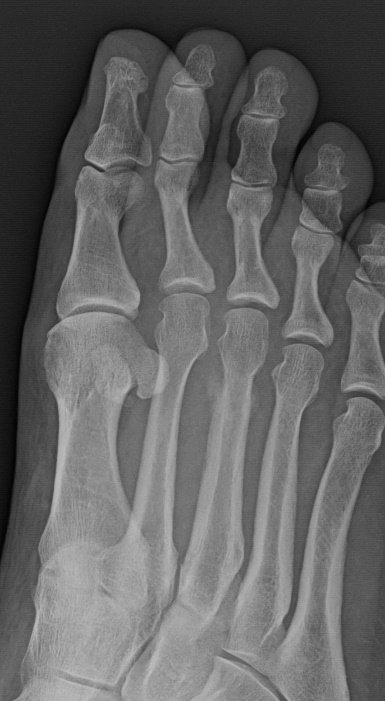Published on
- Liz franc fracture/dislocation
- Fracture, proximal 5th metatarsal
- March fracture
- Necrotizing fasciitis (air in subcut tissues)
- Tuft fracture
Observations
There is periosteal reaction and callus surrounding the distal shaft of the third metatarsal. Fracture line is not seen. Alignment is normal. The joint space is well maintained.
Diagnosis
The patient has a stress fracture of the 3rd metatarsal (also known as a “march fracture”), the most common presenting symptoms of which is pain and swelling that begins diffusely, then becomes localized. The 2nd and 3rd metatarsals are the most common locations. A typical cause is overuse from repetitive stress, such as jogging of marching (hence, “march fracture”).
Radiographs have a sensitivity ranging from 15% to 35% for detecting stress fractures on initial examinations; this increases to 30% to 70% at follow-up, due to more overt bone reaction.
Pearls for Initial Management and Considerations for Transfer
- Evaluation of chronic foot pain should include consideration of an osteolytic lesion, chronic dislocation, and stress fracture.
- A negative x-ray should not comfort the provider, due to the high rate of false positive tests.
- Emergent transfer is unusual and is generally reserved for intractable pain and diagnostic uncertainty.
Acknowledgment: Image courtesy of Teleradiology Specialists.

